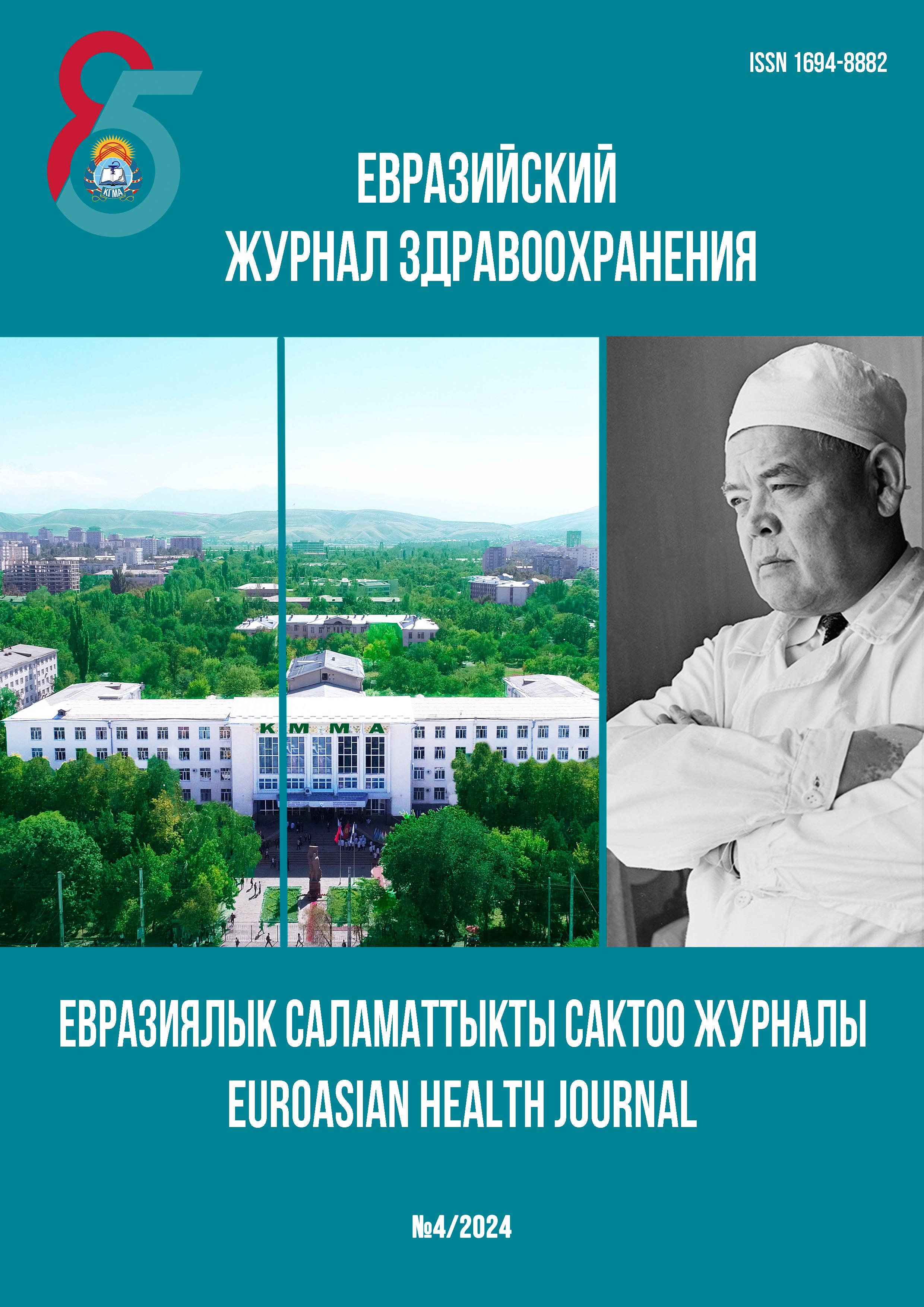FEATURES OF TRANSFUSION THERAPY IN ACUTE MASSIVE TRAUMATIC BLOOD LOSS
DOI:
https://doi.org/10.54890/1694-8882-2024-4-213Abstract
Based on our own experience and international recommendations, the work outlines the basic principles of infusion-transfusion therapy for blood loss and hemarogic shock in polytrauma. Numerous works in all fields of clinical medicine are devoted to the replacement therapy of acute blood loss, the possibilities of its correction and various methods. The thought of this indicates both the severity of the problem and the lack of consensus on ways to solve it. Our work reflects the main characteristics of transfusion therapy for acute mass traumatic blood loss. Special attention is paid to the changes in the concept of transfusion therapy that have occurred over the past 10 years. The importance of the provision on the need for early infusion of high doses of FFB and timely use of platelet concentrate as the most effective therapeutic measures to prevent the progression of acute disseminated intravascular coagulation is emphasized. It is concluded that excessive administration of saline solution is unacceptable in conditions of frequent development of metabolic acidosis in victims. We will consider the issue of introducing the proposed massive transfusion protocol into clinical practice in territorial hospitals of the Kyrgyz Republic.
Keywords:
blood loss, blood circulation, vascular spasm, hemotransfusion, hemodynamicsReferences
1. GBD 2016 Causes of Death Collaborators. Global, regional, and national age-sex specific mortality for 264 causes of death, 1980-2016: a systematic analysis for the Global Burden of Disease Study 2016 [published correction appears in Lancet. 2017 Oct 28;390(10106):e38. https://doi.org/10.1016/S0140-6736(17)32646-6]. Lancet. 2017;390(10100):1151-1210. https://doi.org/10.1016/S0140-6736(17)32152-9
2. Cannon JW. Hemorrhagic Shock. N Engl J Med. 2018;378(4):370-379. https://doi.org/10.1056/NEJMra1705649
3. Callum JL, Nascimento B, Alam A. Massive haemorrhage protocol: what’s the best protocol? ISBT Science Series. 2016;11 (Suppl. 1):297–306.
4. Мороз В.В., Рыжков И.А. Острая кровопотеря: регионарный кровоток и микроциркуляция. Общая реаниматология. 2016; 12(5):65-94.
5. Moore HB, Moore EE, Liras IN, Gonzalez E, Harvin JA, Holcomb JB, et al. Acute fibrinolysis shutdown after injury occurs frequently and increases mortality: a multicenter evaluation of 2,540 severely injured patients. J Am Coll Surg 2016;222(4):347-355. https://doi.org/10.1016/j.jamcollsurg.2016.01.006
6. Simmons JW, Powell MF. Acute traumatic coagulopathy: pathophysiology and resuscitation. Br J Anaesth. 2016;117(suppl 3):iii31–iii43. https://doi.org/ 10.1093/bja/aew328
7. Hornez E, Monchal T, Boddaert G, Chiron P, Danis J, Baudoin Y, et al. Penetrating pelvic trauma: initial assessment and surgical management in emergency. J Visc Surg. 2016;153(4 Suppl):79–90. https://doi.org/10.1016/j.jviscsurg.2016.04.006
8. de Lesquen H, Avaro JP, Gust L, Ford RM, Beranger F, Natale C, et al. Surgical management for the fi rst 48 h following blunt chest trauma: state of the art (excluding vascular injuries). Interact Cardiovasc Thorac Surg. 2015; 20(3): 399–408. https://doi.org/10.1093/icvts/ivu397
9. Токтосун у.Б., Пак Е.А., Мукашев М.Ш., Асанов Б. А. Структурная характеристика смертельного автомобильного травматизма (за 2000 и 2007-2010 годы по материалам РЦСМЭ МЗ КР). Вестник КГМА им. И.К. Ахунбаева. 2018;1:177-181.







